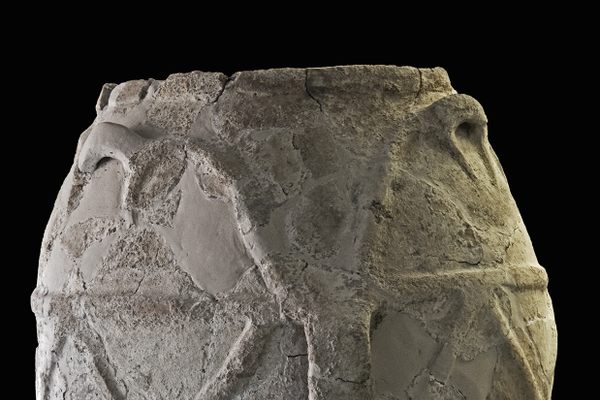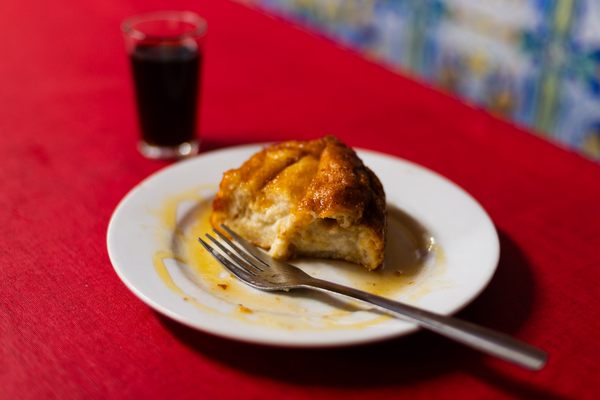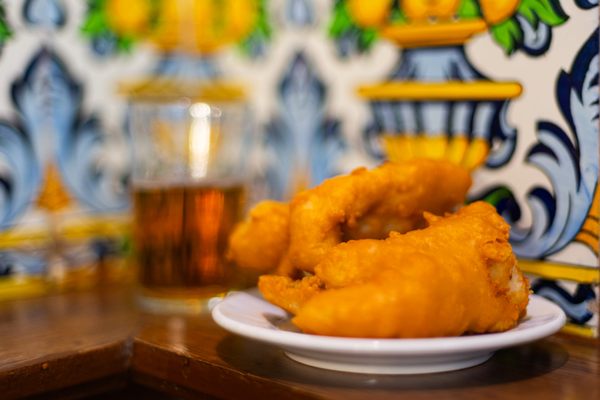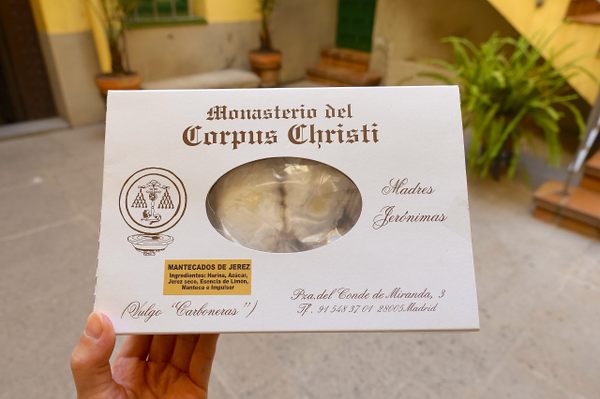Found: A 7,500-Year-Old Cave Painting of Humans Gathering Honey
Back then, it was more like hunting.
Within the foothills of the Iberian System Mountain Range in northeastern Spain, archaeologists have discovered a 7,500-year-old cave painting depicting prehistoric humans gathering honey. The exceptionally detailed image shows a figure climbing a rope ladder to reach a colony of bees. It is considered the best preserved image of its kind and, alongside other rock art found at the site, known as Barranco Gómez, provides a picture of humans transitioning from a hunter-gatherer to an agricultural and shepherding economy.
Manuel Bea, a researcher from the University of Zaragoza, authenticated the painting alongside colleagues Inés Domingo and Jorge Angás. “We have a perfect photograph,” he explains, that provides insight into just how these practices were conducted: by climbing ropes. The Barranco Gómez rock shelter was found by a nearby resident in 2013, but the analysis of the painting published just this year.
“Honey gathering or honey hunting was important for different aspects,” Bea explains. “Honey is one of the most nutritious foods found in nature and it is also sweet, which is rare. But the images also have a symbolic significance attending to the risks taken [by the climbers] in order to get it.”
Honey gathering scenes have been found before in the region, most famously “The Man of Bicorp” in the Cuevas de la Araña, or Spider Caves, which at 8,000 years old is the oldest known surviving depiction.
“The honey hunter is suspended over the side of the cliff and is robbing a wild nest of bees,” said Gene Kritsky, Dean of Behavioral & Natural Sciences at Mount St. Joseph University, on the podcast Gastropod. In “Man of Bicorp,” we see the renderings of a person navigating a rickety rope-ladder, bag in hand amidst a cloud of wild bees. The hunter is fixated on one thing: the honeycombs dangling from above.
“They certainly appreciated the value of honey,” Kristsky tells me. “They went to great lengths to get it.”
No one knows when honey gathering first began. It is believed to predate 2450 BC, when beekeeping first appears in Egyptian hieroglyph renderings. The Egyptians, Kristky explains, believed that bees were a sacred gift. As a result, honey was a divine and sought after treat.
Alongside the honey painting, two others were discovered at the Barranco Gómez site, including a scene depicting a pair of archers and an image of a hind, a female red deer, on the run. The paintings, Bea explains. are reminders of the ingenuity of human evolution.
“Rock art is the best way to see that prehistoric people were like us—or we, like them,” says Bea. In other words, humans have loved honey and gone to length to discover and gather foods of value for millennia.
The research took place as part of the European project “Breaking barriers between science and heritage approaches to Levantine rock art through archaeology, heritage science and IT” (LArcHER). The discovery was featured in the journal Trabajos de Prehistoria.
The authors note that discoveries like this “stress the need for reviewing new and old territories” and to get a better understanding of our food systems. One thing’s for certain though: Regardless of time, consequence, or heights, our collective yearnings for sweet things is timeless.
Gastro Obscura covers the world’s most wondrous food and drink.
Sign up for our email, delivered twice a week.





























Follow us on Twitter to get the latest on the world's hidden wonders.
Like us on Facebook to get the latest on the world's hidden wonders.
Follow us on Twitter Like us on Facebook